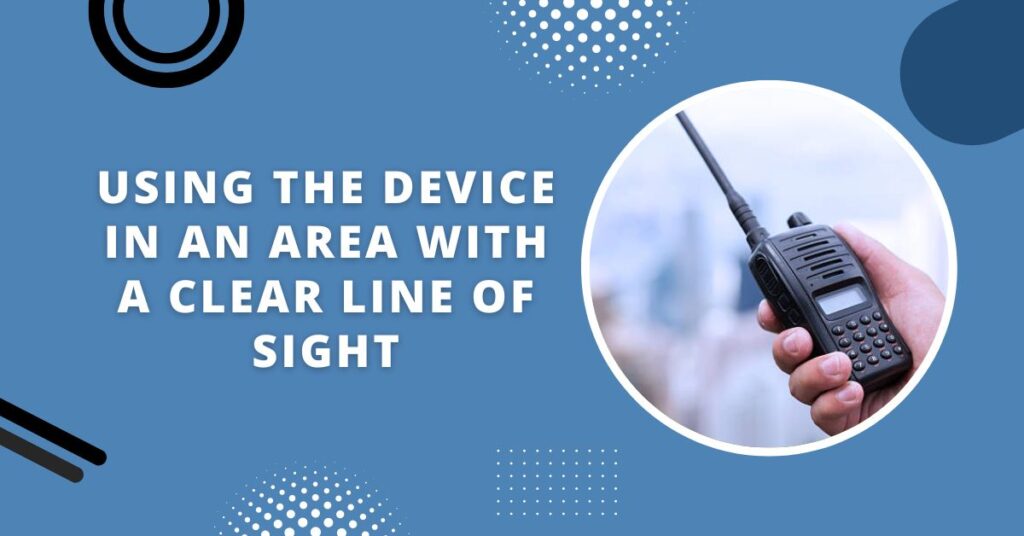Last updated on November 7th, 2023 at 09:21 am
Learn about the range of walkie-talkies and factors that can affect their reach, including terrain, interference, and power output. Find out How far can walkie talkies reach?
Introduction:
An important consideration when using walkie-talkies is the range or distance that they can reach, also known as two-way radios. Walkie-talkies are used for a variety of purposes, including outdoor activities, events, and even professional settings.
We will discuss in this article the factors that can affect the range of walkie-talkies, as well as tips for maximizing the range of your communication. Understanding the range of walkie-talkies is essential for effective communication, whether you are planning a camping trip or need to stay in touch with team members on a construction site.
How far can walkie talkies reach?

The range of walkie talkies can vary greatly depending on the type and quality of the device, as well as the terrain, weather conditions, and other obstacles in the area. On average, most consumer grade walkie talkies have a range of about 1-2 miles in open areas with no obstructions, while more powerful models can extend up to 5-6 miles or more. However, it’s important to note that these estimates are not always accurate and the actual range can vary greatly in different environments.
Several factors influence the range of a walkie-talkie, including its power output, antenna type, and terrain type.
Power output
A walkie-talkie’s power output is measured in watts and has a considerable impact on its range. Walkie-talkies with higher power outputs generally have a greater range than walkie-talkies with lower power outputs.
Nevertheless, it is important to keep in mind that in some countries, there are regulations regarding the maximum power output of walkie-talkies, so make sure you are aware of these regulations.
Type of Antenna
A walkie-talkie’s range can also be affected by its antenna type. Longer antennas typically have a wide range than shorter ones. Furthermore, directional antennas can offer a longer range than omnidirectional antennas.
Terrain
Walkie talkie’s range can be significantly affected by the terrain they are being utilized in. Usually, areas with uneven terrain, dense vegetation, or obstacles can lessen the area they can cover. This is chiefly due to hindrances that hinder or damage the transmission of signals to their intended recipient.
Interference
Interference can also impact the range of a walkie-talkie. These devices are designed to function on a particular frequency and other gadgets that operate on the same frequency can disrupt its signal, resulting in a reduction in range. Numerous electronic devices, such as cell phones, computers, and other similar devices, can also bring about interference.
Range
To maximize the range of a walkie-talkie, choose a device with a high power output and a high-frequency long directional antenna. It is also important to avoid areas with heavy interference and to use the device in an area where there is a clear line of sight.
Miles
The range of a walkie-talkie can vary from a few miles to 30 miles or more depending on the specific device and the conditions. One of the best ways to know how far your walkie talkie will reach is to test it in the conditions you intend to use it in.
Final Words
The range of a walkie-talkie depends greatly on the power output, the antenna type, terrain, and interference. To ensure effective communication and stay connected with your team, it is important to understand these factors and take steps to maximize your walkie-talkie’s range.
Choosing a device with high power output and long battery life

When choosing a device with high power output and long battery life, there are a few key factors to consider.
Intended use of the device
When selecting a 2-way walkie-talkie radio, it is important to consider the intended use of the device. If you require a device that is capable of transmitting over long distances, you will need to choose a walkie-talkie with a large range.
It is also important to consider the power output of the device, as higher power output will result in a stronger signal and therefore a better ability to communicate over longer distances. Lastly, it is beneficial to choose a device with a long battery life, as this will ensure that the walkie-talkie remains operational for longer periods before requiring a recharge.
Battery Capacity
The battery capacity and life of the device should be taken into consideration. A larger battery capacity will typically result in longer battery life, but it is also important to consider how much power the device consumes. It is important to find a balance between power output and battery life when using devices with high power outputs.
Final Words
The intended use, battery capacity and life, and specific components should all be considered when selecting a device with high power output and long battery life.
Using the device in an area with a clear line of sight

The range of communication can be considerably extended by using a walkie-talkie in an unobstructed area. An unobstructed area refers to a location where no hindrances are preventing the signal from being transmitted between the sending and receiving devices, such as edifices, foliage, or elevated terrain.
Line of sight
Because the signal can travel in a straight line and is not obstructed by any obstacle, it can travel farther and with less interference when it has a clear line of sight. On the other hand, when a signal has to travel around or through obstacles, the signal is weaker, and its range is significantly reduced.
Unobstructed area
It is best to use a walkie-talkie in a flat, unobstructed area with a clear line of sight to maximize the range of your walkie-talkie. It is important to note, however, that other factors, such as terrain and interference, can influence the range of a walkie-talkie even when there is a clear line of sight.
Final Words
Using a walkie-talkie in an area with a clear line of sight can greatly increase the range of your communication. Other factors, such as terrain and interference, may also affect the range of your walkie-talkie. To determine the range of your walkie-talkie, it is important to test it under the specific conditions where you intend to use it.
A walkie-talkie’s technical features include:

How do you use a walkie-talkie to communicate?
It also depends on how it is used as to how far a walkie-talkie can reach.
Which is better; UHF or VHF walkie talkie?
When it comes to choosing between UHF and VHF walkie talkies, it ultimately depends on the user’s specific needs. UHF radios offer a better range in urban areas with lots of obstructions, while VHF radios work well in open spaces with less interference. UHF walkie-talkies are also better for indoor use.
However, VHF radios tend to have better sound quality and are often more affordable. It’s important to consider the environment and purpose for use when deciding between UHF and VHF walkie talkies.
FAQs
How far can a walkie-talkie reach?
It is important to understand that the range of a walkie-talkie varies greatly depending on the specific device and the conditions. A walkie-talkie range can range from a few miles to 30 miles or more depending upon the specific device and the conditions.
What factors affect the range of a walkie-talkie?
It is important to note that the range of a walkie-talkie is influenced by several factors, including the power output, the type of antenna, the terrain, and the interference.
How can I maximize the range of my walkie-talkie?
Purchasing a walkie-talkie with a high power output and a long, directional antenna is essential to maximize its range. Furthermore, it is important to use the device in an area that has a clear line of sight and to avoid areas that have heavy interference.
Are there regulations on the power output of walkie-talkies?
Make sure you are aware of the regulations governing the maximum power output of walkie-talkies in your area.
How can I extend the range of my walkie talkie?
You can extend the range of your walkie talkie by using a repeater, which allows communication over a broader area by receiving and re-transmitting signals. You can also use a high-gain antenna, increase the power output, choose a better location, or use a better quality radio with a longer range.
Can walkie talkies reach beyond the horizon?
No, walkie talkies cannot reach beyond the horizon because they work by line of sight. This means that the radio waves require an unobstructed path between the transmitter and the receiver. Anything that blocks this path, such as hills, buildings, or trees, will limit the range of the walkie talkie.
What is the difference between FRS and GMRS walkie-talkies?
FRS (Family Radio Service) and GMRS (General Mobile Radio Service) are two types of walkie-talkies. FRS walkie talkies have a limited range and do not require a license to operate, while GMRS walkie talkies have a longer range and require an FCC license to operate. GMRS walkie talkies also offer more channels and features than FRS walkie-talkies.
How far can a two-way radio reach?
The range of a two-way radio depends on several factors such as radio frequency, power output, terrain, weather conditions, obstructions, and the type of radio. Under ideal conditions, the best two-way radios can reach up to 35 miles.
Are the advertised maximum ranges of walkie talkies accurate?
The advertised maximum ranges of walkie talkies are often exaggerated and not realistic under normal conditions. The range of walkie-talkies can be affected by several factors, and the advertised maximum range assumes ideal conditions with no obstructions, terrain, or weather interference.
Does Bluetooth affect the reception of walkie talkies?
No, Bluetooth does not affect the reception of walkie talkies. Bluetooth operates on a different frequency range (2.4 GHz) compared to walkie talkies (UHF/VHF). Therefore, they do not interfere with each other.
Conclusion
The range of walkie-talkies is important for effective communication because they are a popular communication tool. A walkie-talkie’s range depends on several factors, including power output, antenna type, terrain, and interference.
Your walkie-talkie can be effectively communicated with your team if you understand these factors and take steps to maximize its range. To know your walkie-talkie’s actual range, it’s important to be aware of the local regulations regarding the power output of walkie-talkies. Also, test the device in the conditions where it will be used.
